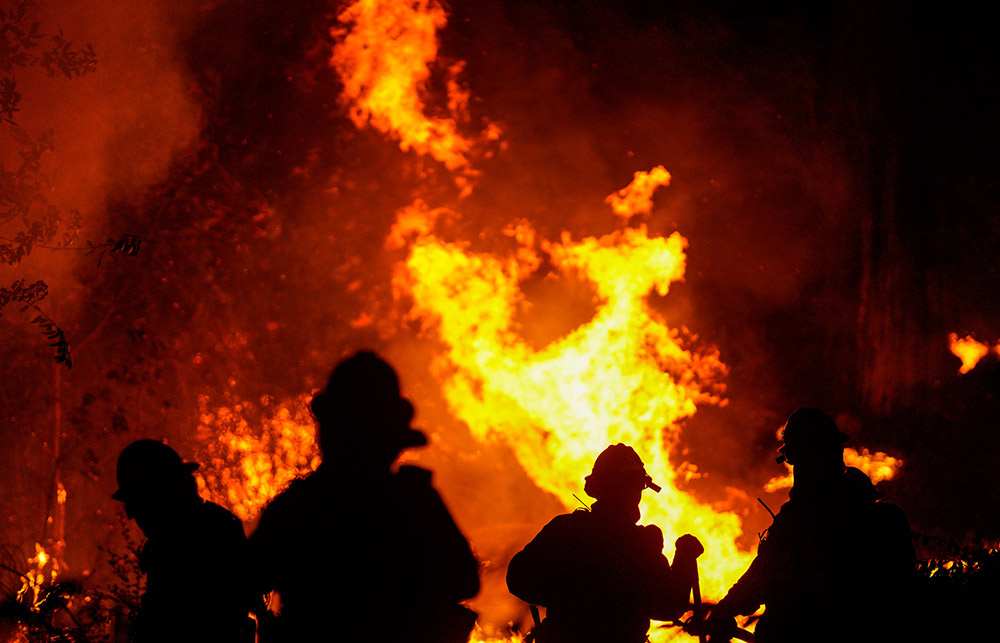
Technosylva公司正在開發機器學習技術,用于提高消防工作的前瞻性,而不是被動響應。
今年加州的野火季是史上最為嚴重的一次。克里斯汀?麥克莫羅不會否認這一點。麥克莫羅是加利福尼亞州最大的消防局加州林業和消防局(Cal Fire)的代表。她親眼見證了野火的嚴重性。她認為這是史上最致命和破壞最為嚴重的野火季。
幸運的是,硅谷的科技公司正在行動起來。
約阿奎恩?拉米雷斯和他在Technosylva公司的團隊正在開發機器學習技術,用于提高消防工作的前瞻性,而不是被動響應。拉米雷斯的公司為加利福尼亞州林業和消防局主要提供了兩項服務:一種是火災風險預測,通過收集氣候、地形、植被等多個因素預測火災威脅最大的地點;另外一種是預測性地圖繪制,幫助消防員了解火勢蔓延的方向以及如何應對。
在本期《財富頭腦風暴》(Fortune Brainstorm)播客中,麥克莫羅接受了《財富》雜志編輯樂文瀾和布萊恩?奧吉夫的采訪。她在節目中談論了這些創新技術如何幫助消防局更好地管理其工作。該播客詳細討論了科技如何改變人類生活。
麥克莫羅說:“這項技術讓我們可以在幾分鐘之內,完成之前需要幾個小時甚至幾天才能夠完成的任務。我們今年已經體會到了它所帶來的變化。但未來,等到應急指揮中心的所有意外事件指揮官都能夠掌握這種技術,它將真正對我們的實際操作帶來巨大的變化。”
Technosylva重點研究數據和機器學習技術的用途,但斯坦福大學的副教授埃里克?阿佩爾在播客中談論了另外一種有助于提升火災預防能力的技術。
阿佩爾表示:“有一種普遍的誤解認為,火災沒有規律,會在森林里隨機發生,但事實上并非如此。絕大部分火災通常都發生在公路旁,靠近公用事業基礎設施。很可惜,在我們的技術誕生之前,沒有任何方法可以先發制人阻止火災發生。所以我們開發了一種類似于凝膠的液體。我們能夠將它噴灑在熱點區域,在整個野火季期間,它會一直粘在植物上。”
阿佩爾說,過去十年,加州80%的火災發生在這些熱點區域,因此,他的產品可以大幅減少消防局為滅火投入的人力、時間和資金等資源。他在與姐夫閑聊的時候產生了靈感。
在播客17分鐘的時候,樂文瀾和奧吉夫邀請資深科技行業企業家吉納?比安基尼,分享了她認為硅谷為什么應該加大力氣,開發火災預測與滅火的創新方法。她認為,為火災過后的重建找到更簡單的方法,同樣非常重要。(財富中文網)
翻譯:劉進龍
審校:汪皓
Technosylva公司正在開發機器學習技術,用于提高消防工作的前瞻性,而不是被動響應。
今年加州的野火季是史上最為嚴重的一次。克里斯汀?麥克莫羅不會否認這一點。麥克莫羅是加利福尼亞州最大的消防局加州林業和消防局(Cal Fire)的代表。她親眼見證了野火的嚴重性。她認為這是史上最致命和破壞最為嚴重的野火季。
幸運的是,硅谷的科技公司正在行動起來。
約阿奎恩?拉米雷斯和他在Technosylva公司的團隊正在開發機器學習技術,用于提高消防工作的前瞻性,而不是被動響應。拉米雷斯的公司為加利福尼亞州林業和消防局主要提供了兩項服務:一種是火災風險預測,通過收集氣候、地形、植被等多個因素預測火災威脅最大的地點;另外一種是預測性地圖繪制,幫助消防員了解火勢蔓延的方向以及如何應對。
在本期《財富頭腦風暴》(Fortune Brainstorm)播客中,麥克莫羅接受了《財富》雜志編輯樂文瀾和布萊恩?奧吉夫的采訪。她在節目中談論了這些創新技術如何幫助消防局更好地管理其工作。該播客詳細討論了科技如何改變人類生活。
麥克莫羅說:“這項技術讓我們可以在幾分鐘之內,完成之前需要幾個小時甚至幾天才能夠完成的任務。我們今年已經體會到了它所帶來的變化。但未來,等到應急指揮中心的所有意外事件指揮官都能夠掌握這種技術,它將真正對我們的實際操作帶來巨大的變化。”
Technosylva重點研究數據和機器學習技術的用途,但斯坦福大學的副教授埃里克?阿佩爾在播客中談論了另外一種有助于提升火災預防能力的技術。
阿佩爾表示:“有一種普遍的誤解認為,火災沒有規律,會在森林里隨機發生,但事實上并非如此。絕大部分火災通常都發生在公路旁,靠近公用事業基礎設施。很可惜,在我們的技術誕生之前,沒有任何方法可以先發制人阻止火災發生。所以我們開發了一種類似于凝膠的液體。我們能夠將它噴灑在熱點區域,在整個野火季期間,它會一直粘在植物上。”
阿佩爾說,過去十年,加州80%的火災發生在這些熱點區域,因此,他的產品可以大幅減少消防局為滅火投入的人力、時間和資金等資源。他在與姐夫閑聊的時候產生了靈感。
在播客17分鐘的時候,樂文瀾和奧吉夫邀請資深科技行業企業家吉納?比安基尼,分享了她認為硅谷為什么應該加大力氣,開發火災預測與滅火的創新方法。她認為,為火災過后的重建找到更簡單的方法,同樣非常重要。(財富中文網)
翻譯:劉進龍
審校:汪皓
Christine McMorrow won’t deny it: California’s fire season was historically bad this year. As a representative of Cal Fire, the largest fire department in the state, McMorrow has witnessed the severity of these fires firsthand, believing them to be among the deadliest and most destructive on record.
Fortunately, Silicon Valley’s tech community is responding.
Joaquin Ramirez and his team at Technosylva have been developing machine learning technology that makes firefighting efforts more proactive than reactive. Ramirez’s company provides Cal Fire with two main services: its “firecast”––which takes in data on weather, terrain, vegetation, and several other factors and predicts which locations pose the biggest fire threats––and predictive mapping, which gives firefighters insight on the direction a fire will go in and how it will act.
On this episode of Fortune Brainstorm, a podcast detailing how technology is changing our lives, McMorrow speaks with Fortune’s Michal Lev-Ram and Brian O’Keefe about how these innovations make the department’s job more manageable.
“This technology, it allows us to do within minutes what previously would take hours or even days to do,” says McMorrow. “We’ve already seen the difference that it’s made this year. But into the future, once we have this in the hands of all of our incident commanders in our emergency command centers, it’s going to make a really big difference in how we operate on the ground.”
While Technosylva focuses on ways that data and machine learning can be of help, Eric Appel, an assistant professor at Stanford University, joins the podcast to discuss a different type of technology that can assist in preventive efforts.
“There’s this general misunderstanding that fires sort of start willy-nilly at random in the forest, but that’s not really true,” Appel says. “The vast majority of fires happen routinely near roadsides, near utilities infrastructure, and unfortunately, before our technology, there was no way to stop them preemptively. So, we’ve developed a gel-like fluid that you can spray in these hotspot areas, and it sticks on vegetation and remains there throughout the duration of the fire season.”
Appel says over 80% of all fires in California over the past decade began in these hotspots, and thus his product, which was inspired by a casual conversation with his brother-in-law, drastically limits the resources departments spend in terms of both personnel time and money to put out these types of fires.
Around the 17:00 mark, Lev-Ram and O’Keefe bring on longtime tech entrepreneur Gina Bianchini to share her opinion on why Silicon Valley should be focused on more than just innovative ways to predict and fight fires. Finding ways to make rebuilding from fires easier, she asserts, should also be of importance.






